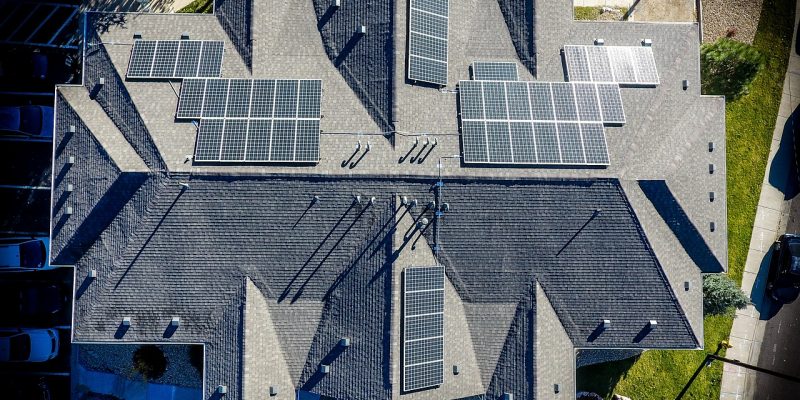What if we told you there’s a way to reduce your electrical bill? That will also make your home more self-reliant, all at the same time. We’re talking about solar energy, of course!
But, with so many different solar energy types, it’s hard to know where to begin. What are the differences between active and passive solar energy?
Should you install the more expensive, complex, and powerful active solar energy? Or the simpler, cheaper passive solar energy options? It will also work with the existing environment.
Let’s clear everything up! Here’s the passive vs active solar energy guide you need for your next home project! Read on!
Definition and Overview
Passive solar energy is energy from the sun that is harnessed to heat a building or create light. You can use it without additional energy from a mechanical system or fuel. This energy is usually captured in a building, usually via windows.
Active solar energy involves the use of mechanical systems and fuel-burning devices. It uses all of that to collect, store, and use solar energy. It involves photovoltaic solar cells, which convert sunlight into electricity that can be used to power items in the home.
Active solar energy can heat entire homes during the winter, while passively heated homes will be limited in their ability to provide heat. Passive solar energy can be used to simply heat part of a room or house, whereas active solar energy can provide a larger amount of thermal energy. Different materials are utilized to capture and store solar energy in each application.
Understanding their Differences
Passive solar energy and active solar energy differ in many factors. Understanding their differences will be key to making an informed decision about what type of solar energy will best fit your needs. Below are those factors.
Cost Effectiveness and Efficiency
Passive vs Active Solar Energy has several differences related to cost and efficiency. In terms of cost-effectiveness, Passive Solar Energy is considered more cost-effective. It is because it doesn’t require additional equipment or installation.
Active Solar Energy, on the other hand, requires additional equipment and installation. It often results in higher upfront costs.
In terms of efficiency, the Passive type is considered to be more efficient. It relies on natural heat exchange to heat or cool a building or water.
Active type requires additional components. For example, solar panels or solar thermal systems convert sunlight into energy.
When considering the differences between passive and active solar power, cost and efficiency should both be taken into consideration.
Environmental Friendly
Passive solar energy is environmentally friendly in a way of producing energy as it requires no additional energy sources or technology. Active solar energy, on the other hand, uses specially designed technology to transform sunlight into useful electrical energy. It requires an investment in equipment, but it also offers more efficient and consistent energy production.
Both passive and active types are environmentally friendly as they both result in reduced carbon emissions from conventional power plants. They provide fewer energy losses in the production process. Using solar energy helps to preserve natural resources that would otherwise be depleted.
For environmental protection, it is important to consider the benefits of both methods and to choose a renewable energy source that will best suit the needs of a particular project.
Control
Passive solar panels rely on the natural environment, meaning there is no active energy control involved. The heat and light entering a building are managed through its orientation, massing, windows, walls, floor, and roof. These elements are designed to respond to the available light and heat, regulating the energy levels within the structure.
On the other hand, the active solar system relies on a higher degree of control. This requires the use of technology to harvest and direct solar energy. The energy is redirected to various services, such as electricity or hot water generation.
Knowledge in Installation
Passive solar energy systems are best for lower-output applications. For example, solar water heating and the heating of indoor spaces. These systems use solar thermal mass, such as walls and footings, to accumulate and store heat directly from the sun.
With passive systems, knowledge of installation requires professionals. It is to understand how to optimize building and window orientation, materials selection, and other elements.
Active solar energy systems are more powerful and require more knowledge for installation. It is because they include photovoltaic (PV) solar panels, wiring, temperature sensors, and other complex components.
Instead of relying on thermal mass to store solar energy, sensors detect the sun and trigger an inverter. It is to convert direct (DC) to alternating (AC).
This type of system requires licensed electricians and PV installers to ensure the safety and efficiency of the solar photovoltaic array. You can see this here for you to learn more and to help yourself convince in using one. Both passive and active solar-type have their advantages and drawbacks, and both can be used to create home energy solutions.
Maintenance
The main difference between passive and active solar energy maintenance is active solar energy requires the most. Not only does the panel require regular cleaning and maintenance to ensure its performance, but accessories used to tie the device into a building’s energy system may also need regular attention.
Passive solar energy, on the other hand, does not require as much maintenance. It relies instead on carefully placed windows, insulation, and other construction decisions to take advantage of the sun’s energy.
Storage for Later Use
This is a distinct feature of active solar energy systems. It is one factor that makes them more suitable for widespread use in the modern world.
Unlike active type, passive solar energy can be stored for later use using thermal mass, which consists of materials like masonry, water, or concrete that absorb and retain heat. This stored energy can help keep a home warmer in the winter months and cooler in the summer months.
Passive vs Active Solar Energy: Identifying Their Best Uses
Using both passive and active solar energy are great ways to save energy and money. Solar energy is great for both residential and commercial use.
If you’re looking for an energy choice that is economical, durable, and environmentally friendly, then you can seek more about passive vs active solar energy. They are the perfect energy choice that you may have. Investigate your options today and take control of your energy costs!
Did you find this helpful and want to read more great content? Visit our latest blog posts now!




















